.
.
“Balboa,” a story by Matt Sweeney, was a short-listed entry in our recently concluded 54th Short Fiction Contest. It is published with the permission of the author
.
.
Image by Martin Briones from Pixabay
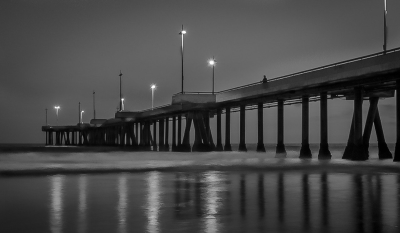
.
Balboa
by Matt Sweeney
.
___
.
Now I’m getting older too.
Stevie Nicks
.
…..I leaned against the railing at the very end of the pier, looking back toward the Rendezvous Ballroom. Only the ballroom lights were visible in the darkness, but I could hear the driving beat of the band, distinct, though faint. What a rhythm section. The night was warm and crystal clear. There was no moon, just a faint purple glow above the razor-edged horizon.
…..At the other end of the pier a match flared and the glowing end of a cigarette started to glide toward me, taking its time, until a vision in white emerged: silk evening dress, pale bare shoulders, long blond hair swept up, statuesque. Edie.
…..“Here you are,” she said.
…..“Here I am,” I said. She stepped into my arms. I almost passed out with joy. I had not seen her, touched her, since before the war. I was finally truly home, safe and warm.
…..That’s how I remember it anyway, clear and sharp as that Pacific twilight horizon. Now I’m sitting at the bar at Catalina’s Jazz Club in Hollywood, taking a break. We’re due to start the second set in a few minutes. The club is pleasantly crowded, the fans nattily dressed, fashionable, cool, chatting, drinking. I love that crowd buzz.
…..As I sip my Jameson’s, I’m still back on that Balboa pier with Edie and imagining once again a movie that might have been made by Orson Wells or Martin Scorcese, a scene at the old Rendezvous Ballroom where Edie was the band’s vocalist back then. I can’t get this scene out of my mind: a long single-take tracking/crane shot starting in that sunset afterglow at the end of the pier where Edie and I were holding on to each other for dear life with the Rendezvous Ballroom and Balboa Bay in the background, the sound and the pulsing rhythm of the band in the distance.
…..We pull back and move slowly up and away from the embracing couple, then along the pier, approaching the Rendezvous ballroom, closer, closer, until we reach the huge arched portal and double doors of the ballroom, then exploding through the doors and inside the cavernous space, we’re overpowered by a deafening blast of stomping big band swing music.
…..And we find ourselves sweeping up, soaring, floating and circling around, above the fevered inferno: a vast dance floor jammed with four thousand twenty-year-old servicemen and their girls, ecstasized by the pounding music, the band’s driving horns and rhythm section blasting a locomotive version of Honeysuckle Rose, with the couples locked in close embrace, the girls leaning into the boys, chest to chest, their hips and upper bodies gliding motionless while their legs furiously shuffle in at the three-beat-pause rhythm, dancing the Balboa.
…..We roam around the vast auditorium above the revelers and then spiral down closer to the stage and across the swinging perspiring band musicians in their matching suits, and finally down to the dancers’ level, circling around the perimeter of the dancers, then diving into their midst, becoming one with them.
…..The frantic tempo is relentless and is heightened by the sound of the dancers’ shuffling leather-soled shoes on the floating hardwood floor. The band starts taking 8 bar breaks where the only sound comes from the frenetic dancers feet – 1,2,3, pause, 1,2,3, pause, 1,2,3, pause, swinging Morse code for the letter ‘V’. This swirling scene and joyous music continue until, after a thunderous climax, the tune stops on a dime with an explosive simultaneous crash from the drummer’s bass and snare drums. The crowd explodes, yelling and clapping with joy. The scene abruptly cuts to the silent couple, still embracing on the pier.
…..Edie and me, standing quietly, finally together.
…..But when the music ended, her body tensed as she heard the crowd cheering after the snare drum crash that punctuated the performance.
…..“I’ve got to get back,” she said. “I’m up next.” She looked into my eyes. Her own eyes were wide and terrified. “I talked to Tommy. I don’t think your audition thing is going to work.” Her eyes filled with tears. “We can talk about it after the show.”
…..I opened my mouth to protest. She put her hand up against my cheek. “Can you meet me at Stark’s after the show? I’ll explain everything.” She was backing away now. “And please, don’t let Tommy see you here.”
…..She turned away and started running up the pier. As we were holding and whispering to each other with the sounds from the Rendezvous in the distance, the fog had been moving in, slowly and silently, and had finally engulfed us. You couldn’t see the ballroom lights or even the end of the pier. She ran into mist, her heels clicking. I watched her disappear. I didn’t feel safe and warm anymore. A dread had crept into me, surrounding my heart. I had stopped breathing.
…..My reverie at the bar in Catalina’s is broken when Ben, our piano player, starts in on some block chords. I look up and see the bandstand, lit by the spotlights, the curtain behind the bandstand glowing red and the band members waiting for me. I leave a tip for thebartender, walk up to the bandstand and pick up my alto. The band is ready. The crowd is ready. The set list starts off withour attempt to do justice to Wayne Shorter’s Footprints. I count off and we were into it and, after the initial challenge of Billy on trumpet and me trying to get the first chorus harmony right, I take the first solo and find myself back where I belong, interacting and communicating with the guys and girl in the band. The girl, a whirlwind of motion behind her drum kit, is called Iris, music genius, budding superstar, forty years my junior, three years out of Berklee with long natural jet-black curls bouncing every which way with her polyrhythms. The guys in the quintet are a little older, in their thirties, with only Billy, my best friend, closer to my age. The band has been together now for five years, except for Iris, and she’s learned very quickly how we talk to each other.
…..After we wrap up Footprints and the applause dies down, we start an easy, loping version of “September in the Rain,” and after Billy’s trumpet solo, I improbably become the band’s vocalist – ”The leaves of brown came tumbling down, remember…” shamelessly copying Edie’s laid-back phrasing and intonation, which over the years have become as much a part of me as my alto, even my own skin.
…..After the last set I walk with the band the few blocks over to the Roosevelt Hotel and head up to my room, try to get some sleep. But I’m wide awake. Whenever I’m in Hollywood Edie is with me, in my thoughts, dreams. I never really get her out of my mind, but it’s even more intense in Hollywood.
…..That night in Balboa, after she had disappeared into the fog, I walked up to the head of the pier, then along Oceanfront in a bereft daze, the surf crashing a hundred yards away, trying to figure out what had gone wrong, what happened to my band audition, and what was wrong about Edie.
…..I knew Balboa, grew up there, so I knew the streets and alleys around the pier, the Ferris wheel and the fun zone. That’s where I hung out when I wasn’t practicing piano and saxophone, which has obsessed me since I was ten. Balboa wasn’t a millionaire’s enclave then and I was no rich kid. We couldn’t pay for surfboards, but we body surfed from the pier down to the Wedge. When I wasn’t in the water, I spent my time practicing the saxophone. That’s all I ever wanted to do, all I cared about.
…..I finally caught a ride back to Stark’s Saloon from a sailor driving a new Ford pickup heading the same way. Stark’s was a five-minute drive from the pier, sitting in a little alley just off West Balboa Boulevard. I had stopped at that seedy hangout earlier that day after arriving on the Greyhound and trudging over with my bags from the bus stop. Edie had discovered and written to me about Stark’s and the woman bartender that had befriended her while I was overseas. She had discovered Stark’s while playing at the Rendezvous with Tommy’s band.
…..So I knew Balboa and I also knew Stark’s. I used to play there in a rhythm and blues band before the war, before I could even get a drink. I remember a terrace up on the second floor where I hung out, looking out at the Pacific towards – what? Hawaii? Tahiti?
…..Starks has been on the peninsula forever. One of the older bartenders said that the bar had opened in 1902, the birth year of two of my heroes: blues legend Son House and my clarinet master Buster Bailey. Lester Young, born a few years later in 1909, took Buster Bailey’s place as my mentor, unbeknownst to him, when I first saw Lester playing at the Dunbar Hotel on Central Avenue in South LA. Lester, Hampton Hawes, and Chico Hamilton played in joints around Newport Beach when doing mini-tours between gigs on Central Avenue. When I was in high school I started getting gigs in the Central Avenue jazz clubs, learning the hard way how to play jazz, how to listen to and interact with jazz musicians, especially black musicians.
…..I moved to Philadelphia when I was a junior in high school when Lester Young gave me some advice that changed my life: that Union Local 247 in Philly was the logical next step in my education. Luckily, my grandparents lived there and let me stay with them. Edie also grew up in Philadelphia. We met in my senior year of high school there.
…..Edie wrote me all the time I was overseas. She wrote me about the opening in the Stan’s band just after I got discharged in New York. I immediately jumped on a Greyhound and endured four hellish days riding cross country on that wretched bus.
…..A stationary camera sits in the middle of a two-lane highway running along the Pacific Coast. We’re looking east down a road that extends into the infinite distance, disappearing at the horizon shimmering in the afternoon sun. A tiny object, hazy and wavy, appears on the road, emerging over the horizon.
This tiny speck moves toward us, imperceptibly moving closer and closer until, after an eternity, it becomes recognizable: a greyhound bus, looming larger and larger until, in a rush of roaring engine noise, exhaust, swirling sand, and the whoosh of the air brakes, the huge bus arrives, its massive grill and windshield completely filling the screen. The bus door opens and the exhausted passengers emerge, rumpled and bleary eyed. One of the passengers in a tired army uniform jumps to the sidewalk carrying a saxophone case and a beat-up suitcase.
…..That was me arriving in Balboa, California.
…..After lugging my bags over to Starks Saloon that day, I sat at the bar with a beer, alone in the joint with the bartender, an “older woman” around thirty. I was twenty-three.
…..“I live on a boat in the harbor,” she said. “It’s a 35-footer. My dad had it hauled to the marina here from Salt Lake City so I’d have a place to live while I went to nursing school. Then I dropped out of school but I still live on the boat. I do OK working here, the tips are good, my dad pays for the boat slip. I keep thinking he’s gonna want his boat back, but so far so good. I don’t know. I’ll worry about it when the time comes I guess.”
…..“Take it one day at a time?” I said.
…..“Yeah one day at a time.” She gazed over my shoulder into her future, then eyed my alto case sitting on the stool next to me. “What about you. Are you playing around here somewhere? I’m Peggy by the way”
…..“Oh yeah, hi,” I said, “I’m Pete, just got discharged back in New York. I know the singer in the band here, at the Rendezvous, Edie Clayton.
…..“Yeah, wow,” she said. “So you know her? She’s in here all the time.”
…..“I know,” I said. “She wrote me about you.”
…..“We go to the Rendezvous a lot, my boyfriend and me. He’s stationed at Santa Ana. We like to dance.”
…..“Edie’s my girl,” I said. “She wrote me that the band had an opening. I came out here to try to get the gig. I’m meeting her after the show.”
…..I was feeling uncomfortable talking about myself, or about Edie. There was a kind of dread and anxiety building up in me. I didn’t have the gig yet. Didn’t have an audition really. Edie hadn’t even told me where she was staying or how I could reach her, just to meet her on the pier after the show.
…..“So, anyway,” I said, “Can I leave my stuff behind the bar over there until I find a place to stay?”
…..“Sure,” she said. “I’ll be here all night.”
…..After an hour of rolling around in the Roosevelt Hotel bed, I get some ice, pour an Irish whiskey from the minibar and stand at the window, staring out toward the lights along Cahuenga Boulevard. There’s Catalina’s, just south of Hollywood Boulevard, a few doors away from the old Shelly’s Manne Hole, long gone.
…..Back when we played at Shelly’s Manne Hole in the sixties, Edie was still singing with the band. Shelly had just torn down the wall and expanded the cramped little dive into the next storefront, doubling the size of the old place. It was still cramped, but held twice the number of jazz fans, crazy happy to be hearing a live jazz band like Shelly Manne and His Men. What a difference from the cool sophisticated folks at Catalina’s twenty years later. At Shelly’s Manne Hole, the crowd was kids, college students dressed in scruffy jeans and parkas, acting sophisticated while they smoked and nursed their beer. But they got the music. They loved the music and that feedback was what we lived for.
…..Edie was drinking seriously by then, but her chops were still fine and mellow. Billy was there on trumpet, co-leader of the band with me. He and Edie and I and the rest of what was a sextet then were all alumni of Stan’s band, which had taken over the Rendezvous Ballroom gig after the war. Edie and I had been hired by Stan after the trouble with Tommy.
…..By the time we were playing at Shelly’s Manne Hole in 1962 the band had been transformed after absorbing the music of Charlie and Dizzy and Bud and years struggling around the clubs in New York -Midtown, Harlem, and the Village – then ending up as the house band more or less at the Five Spot in the Bowery. We played non-stop, all day, all night and kept getting better, tighter. They called it bebop, then hard bop, then post-bop, whatever. Critics label music, musicians do not. Edie was always close by, usually as part of the band. We had gotten married after I extricated her from that shit storm with Tommy. ‘I helped her out of a jam I guess, but I used a little too much force,’ to quote Bob Dylan.
…..Edie was with us for our Shelly’s Manne Hole gig. I introduced her and she swept up to the bandstand, a sight to behold, dressed simply in a long white skirt and a black blouse, a gold chain and locket around her neck, blond hair piled up on her head. I counted off and we jumped into ‘Ornothology’. Although the band usually calmed down to a light, coolish, Miles Davis kind of swing when Edie came up to sing, this performance was uncharacteristically breakneck. We played a few choruses, Edie standing at the mic, turning sideways from the audience, head bobbing with the rhythm and looking at me lovingly as I soloed, giving me the chills, then breaking into her vocal as we segued into ‘How High the Moon’.
…..And the sound, her voice. I don’t have the words to describe it. Think Billie Holiday, Anita O’Day, June Christy. As she sang, the kids in the crowd were entranced by her cool warmth, husky voice, just her incredible glowing beauty, as was I.
…..I finally climb back into bed and sleep for a few hours. When I get up around nine am, I’ve made a decision. I’m not waiting any longer. After showering, putting on my sweats and taking the elevator down to the lobby, I start running down Hollywood Boulevard, heading east. I’m feeling ok now. I know where I need to go. No more anxiety. ‘No more doubts or fear, I done found my way,’ as Nina sang at her legendary performance at the Village Gate.
…..I run, meandering along the side streets, down to the seediness of Santa Monica Boulevard. The winter sun is climbing, the sky bright. My mind wanders back again as I lope along in the wonder of God’s own southern California sunlight, back to that night at Stark’s, waiting for Edie and the band to finish the Rendezvous show. Starks was packed solid when I got there. Peggy nodded to me from behind the bar when I walked in. The soldiers and sailors jostling along the bar were two-deep. She was working non-stop alongside two other bartenders. I found a place, wedged myself in and ordered a draft Pabst Blue Ribbon.
…..I had finished half the beer when the front doors burst open and Edie ran in from the street, her usually cool and confident eyes wide and frightened. The elegant white silk evening dress was torn. There was a blueish bruise starting on her left cheekbone. Tommy followed her in, his face distorted with anger. Seeing the hate and rage in Tommy’s eyes, Peggy ran out from behind the bar, grabbed Edie and ran with her upstairs, out onto the terrace. I could see now that Peggy knew all about Tommy. All the dread and fear that had gathered up inside me since seeing Edie on the pier now rushed to the surface. As Tommy hurled himself toward the stairs after Edie I grabbed the mug off the bar, plunged through the crowd and clobbered the side of his head.
…..I stop running when I get to the Starbucks at Vine Street, order a 20-ounce black coffee to go and walk the remaining block over to the entrance of Hollywood Forever cemetery. After a word with the guard, I’m following the signs toward the Abbey of the Psalms along a walkway lined with towering palms and Hollywood junipers, studying the map the guard gave me. I get to the mausoleum and find the Sanctuary of Trust and walk down the wide vaulted hallway, brilliantly lighted by wall-to-wall skylights along the entire length of the hallway. I’m walking slowly now, looking left, then right, left and right, at the crypts along either wall. Then I see it. I stop and stare.
.
EDIE CLAYTON
JAZZ SINGER
1926 – 1983
.
…..I hunker down, then sit on the cold marble floor, sipping my coffee, staring up at the raised letters on the bronze tablet. I don’t know how long I sit there, looking up at Edie’s crypt.
…..Eventually the skylight brilliance darkens and stars glitter through the glass. My coffee’s cold. I’m cold too, and tired. Time to go. As I struggle to my feet, kneescracking, I glance over and am startled by another tablet I hadn’t noticed, two spaces away from Edie’s.
.
PEPPER
ARTHUR EDWARD, JR
1925 – 1982
The Winner Always in the Fatal Game
Loved Forever
.
…..My God. So now she’s hanging out with another alto player. I hunker back down, staring at Art Pepper’s marker, crying now. And the relentless, never-ending questions continue to pound in my head: When did she start drinking hard? Maybe when I went to jail, serving a year for felony battery on an influential band leader. Why did I miss her death? Maybe because I was in Camarillo State Hospital recovering from electro convulsive therapy for an eviscerating chronic depression.
…..Why couldn’t Edie and I had a life and love and family like Dave and Iola Brubeck, living out their years happily composing and supporting each other’s genius, free from mind altering substances, married 70 years with happy kids following in, if not exactly filling, their footsteps?
…..I knew one thing. I had a show starting at Catalina’s in an hour. When you’re not quite sure what to do next, showing up is always a good option.
.
___
.
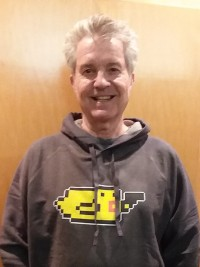
Matthew Sweeney is a writer who lives with his wife in the hills just north of Los Angeles. He has written short stories and non-fiction pieces about music, travels, and film, including, most recently, a piece in the publication Jerry Jazz Musician entitled “Transcending the Blues.”
.
.
Listen to a 1961 recording of Shelly Manne playing “How Could This Happen to a Dream?” with Manne (drums), Conte Condoli (trumpet), Richie Kamuca (tenor sax), Russ Freeman (piano) and Chuck Berghofer (bass)
.
.
.
Click here for details on our upcoming Short Fiction Contest
.
Click here to read “A Failed Artist’s Paradise” by Nathaniel Whelan, the winning story in the 54th Jerry Jazz Musician Short Fiction Contest
.
.
.







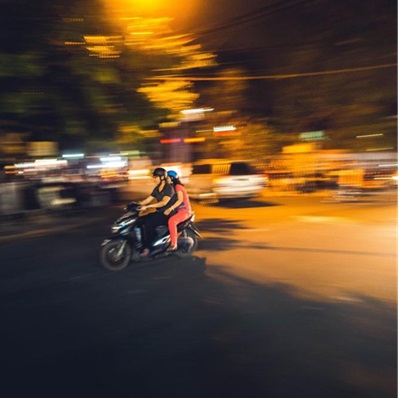



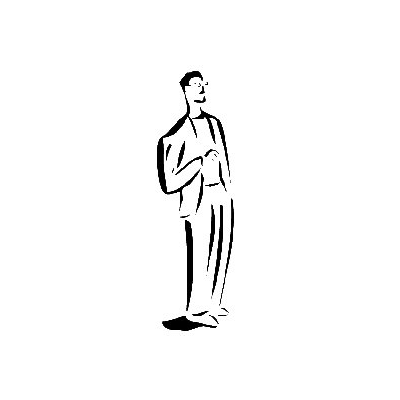
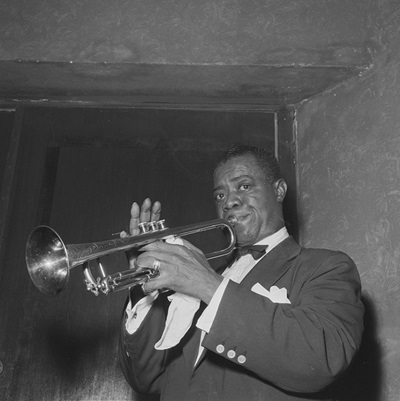
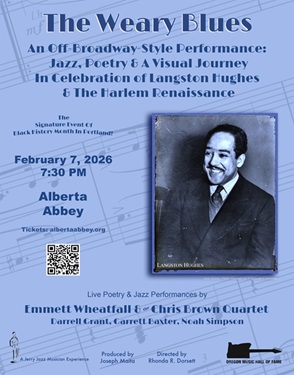

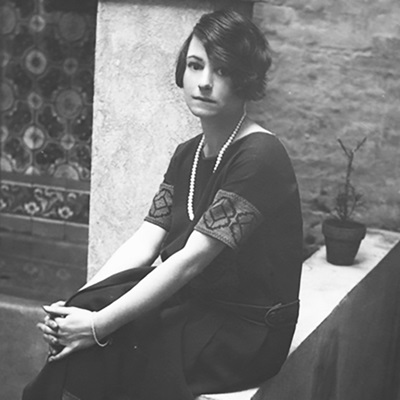
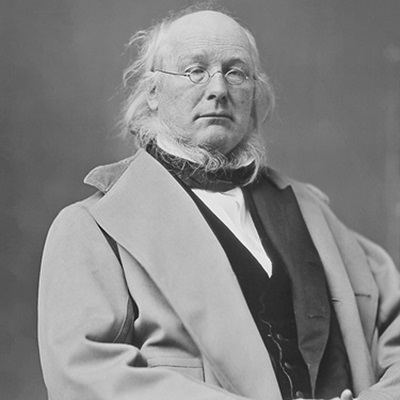



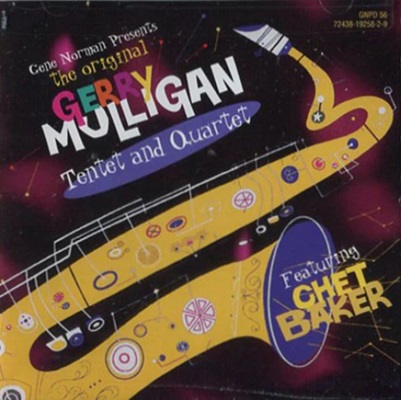

























I loved the atmosphere in this story. I could see and feel it. Loved the references to jazz and the Los Angeles vibes! I could “see” the couples dancing the Balboa!!
The reflections in “Balboa” resonate with sharp sensory recollections, moving musical memories, and sharp emotions that continue to haunt the protagonist even after the passage of multiple decades.
Matt took me back to the late 1940’s and early 1950’s when I worked and played in L.A. we danced at the Aragon ballroom. Listened to Red Nicholes and his Five Pennys. Heard Nat “King” Cole in person. I was 20 again, not 95. Loved the story.